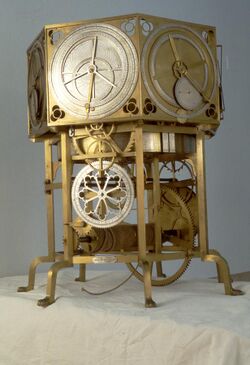| Display title | Astronomy:Astrarium |
| Default sort key | Astrarium |
| Page length (in bytes) | 7,710 |
| Namespace ID | 3024 |
| Namespace | Astronomy |
| Page ID | 177982 |
| Page content language | en - English |
| Page content model | wikitext |
| Indexing by robots | Allowed |
| Number of redirects to this page | 0 |
| Counted as a content page | Yes |
| Page image |  |
| HandWiki item ID | None |
| Edit | Allow all users (infinite) |
| Move | Allow all users (infinite) |
| Page creator | imported>Steve2012 |
| Date of page creation | 10:39, 6 February 2024 |
| Latest editor | imported>Steve2012 |
| Date of latest edit | 10:39, 6 February 2024 |
| Total number of edits | 1 |
| Recent number of edits (within past 90 days) | 0 |
| Recent number of distinct authors | 0 |
Description | Content |
Article description: (description)
This attribute controls the content of the description and og:description elements. | An astrarium, also called a planetarium, is a medieval astronomical clock made in the 14th century by Italian engineer and astronomer Giovanni Dondi dell'Orologio. The Astrarium was modeled after the solar system and, in addition to counting time and representing calendar dates and holidays, showed how... |
